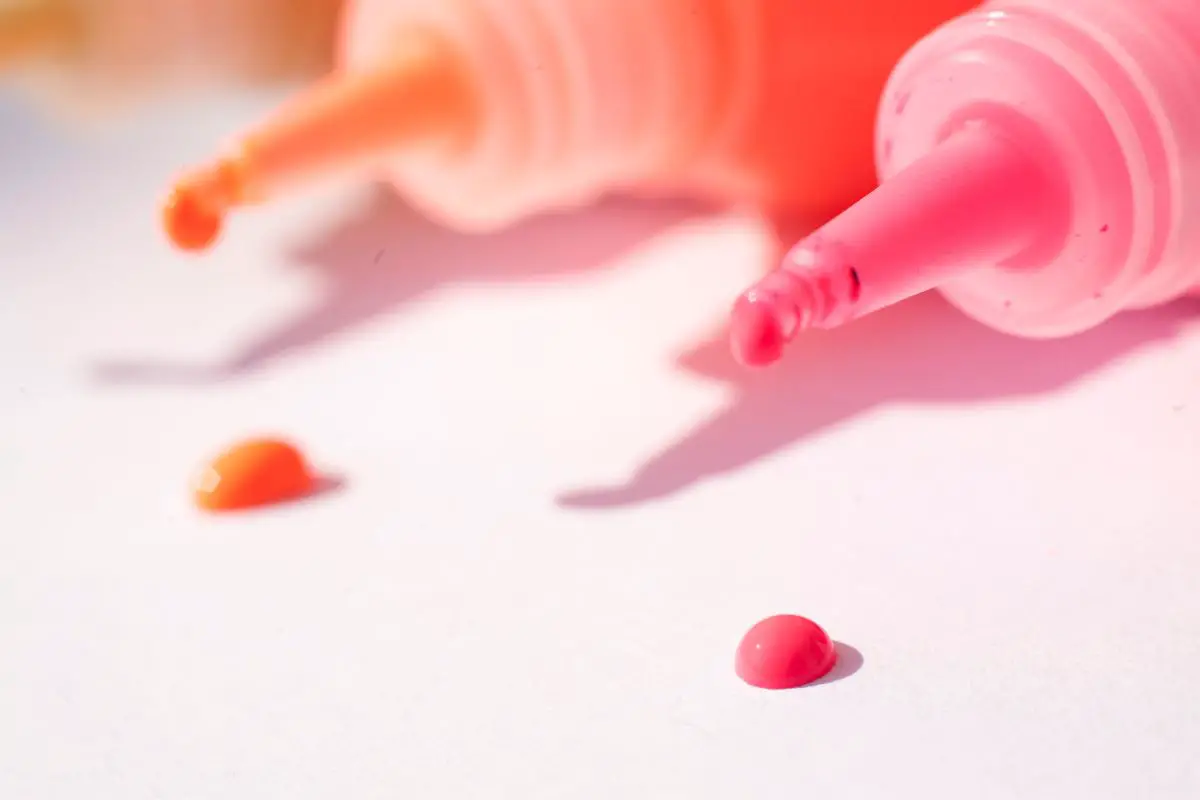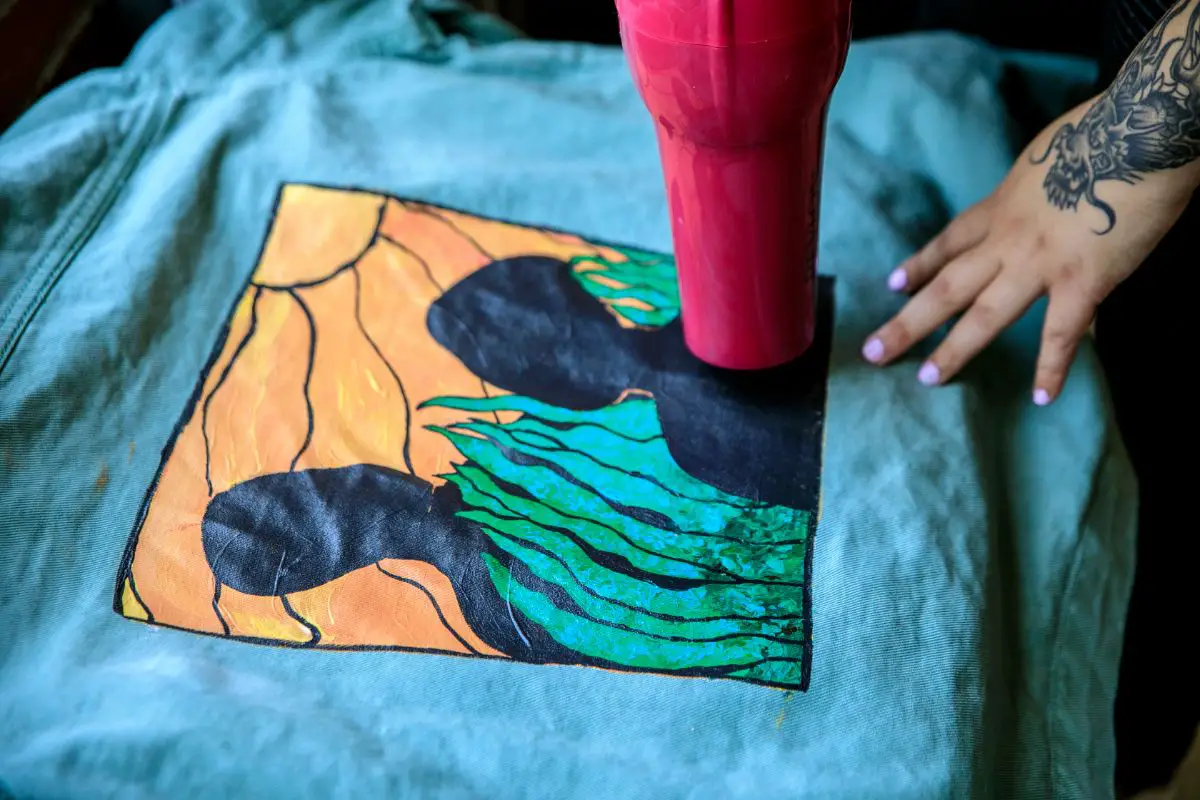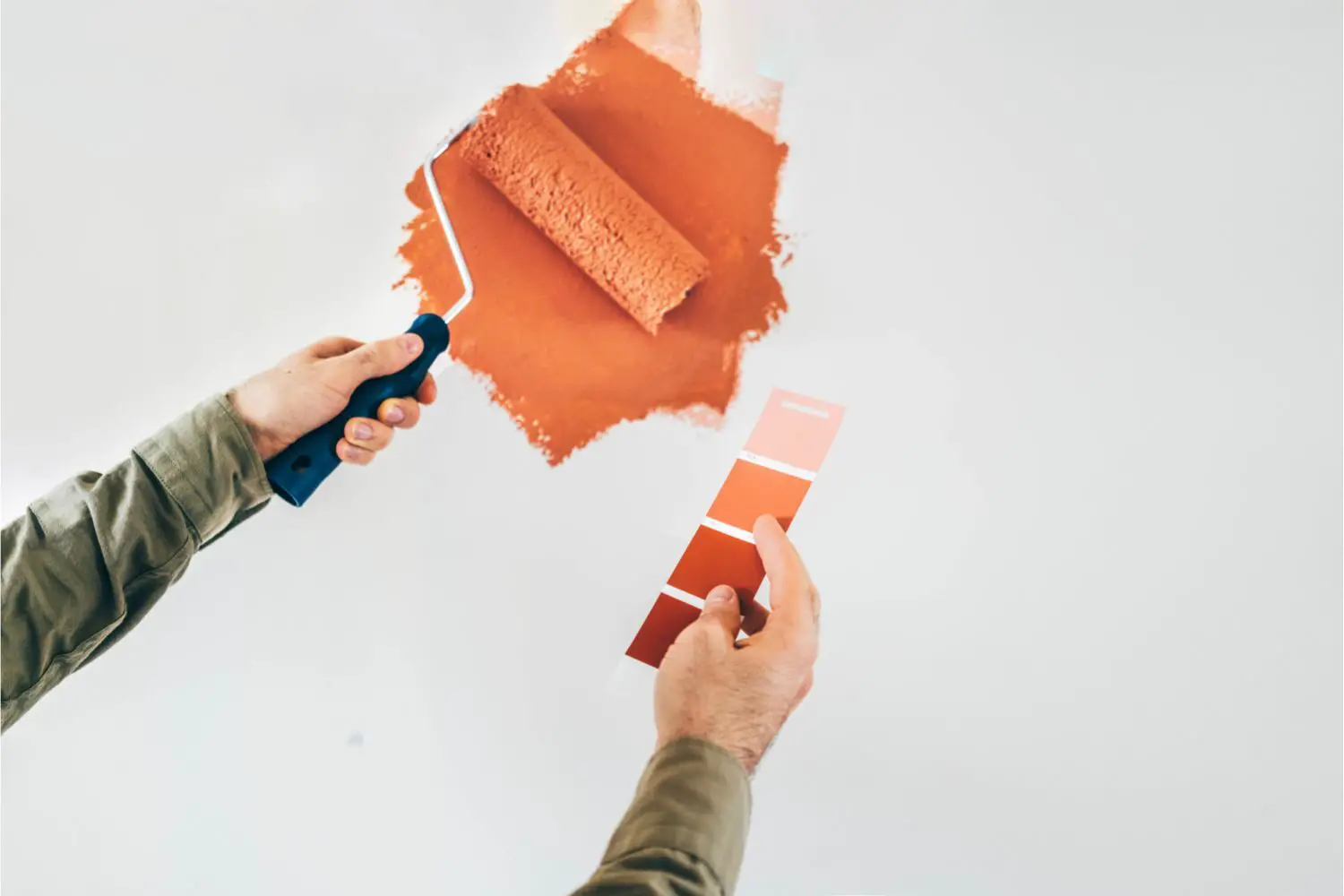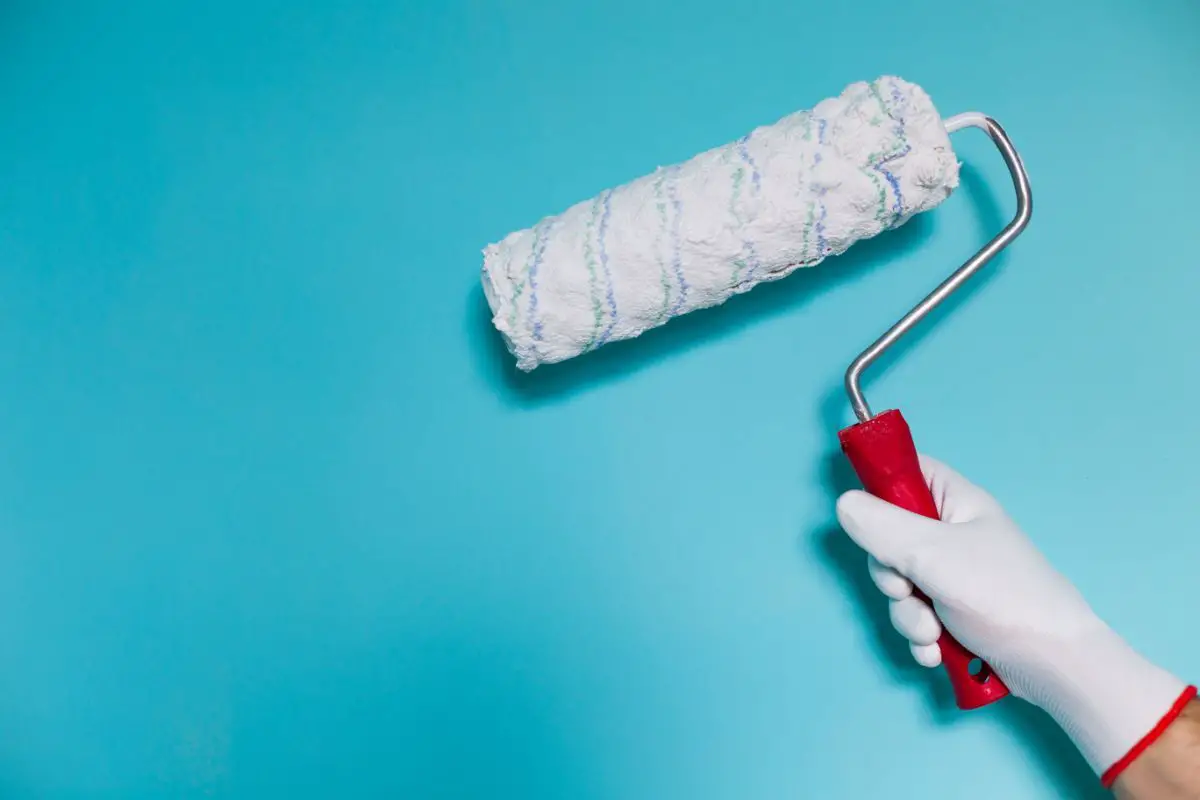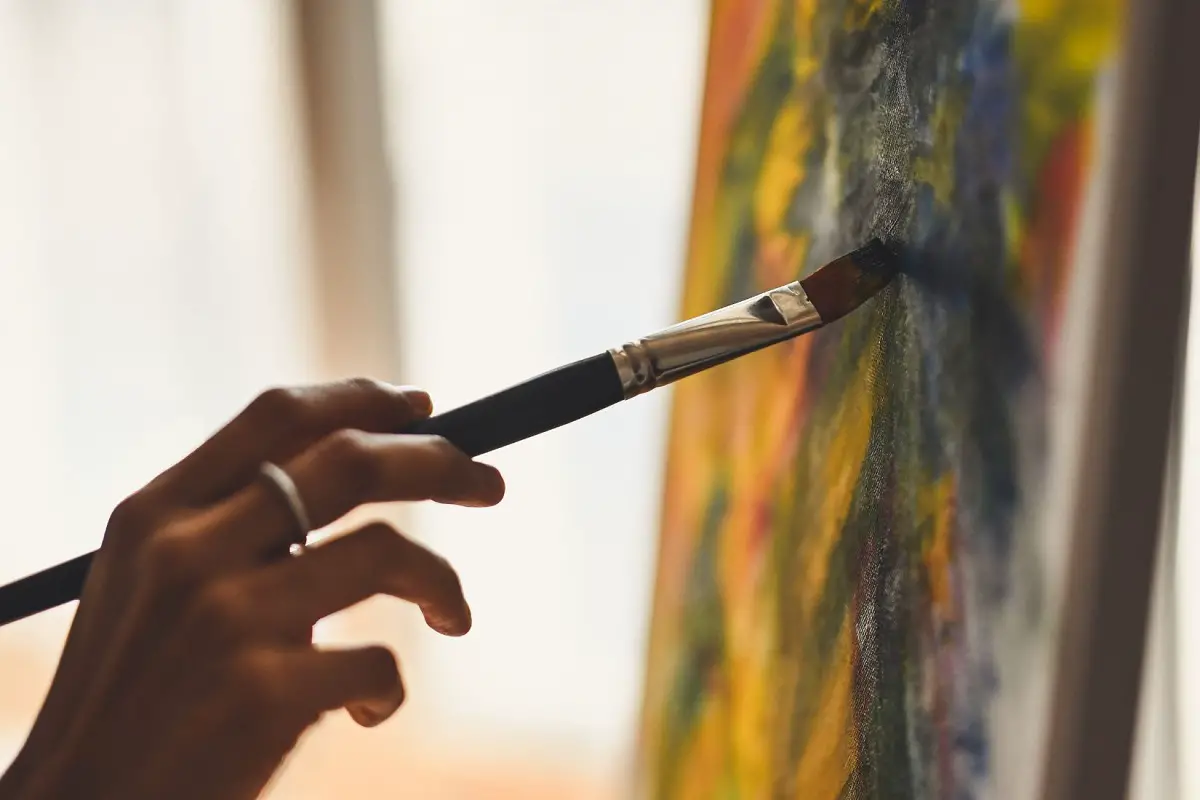When it comes to painting onto a wide range of surfaces and materials, acrylic is often considered one of the best, with it being usable on everything, from canvas to leather, to pottery and ceramics, and so on!
If it’s a non-greasy surface, then chances are that you’ll be able to use acrylic on it!

This realization often leads to a whole range of questions, mainly focusing on what other surfaces acrylic paint can be used on.
One of the items that always gets brought up for using acrylic is human skin. After all, with its bright colors and how easy it is to get a hold of, acrylic seems like it would be a great paint to use on your skin, whether it is your face or your body.
But is that the case? How safe is it to use acrylic paint on your skin? If not, why exactly.
This is why we have created this guide. Not only to show you some alternatives, but to also help explain the effects of painting non-suitable paints onto your skin.
And, most importantly, why it probably isn’t the best idea to start painting your skin with acrylic paint.
Body Canvasing
While we often associate body painting with novel events such as a party or during kid’s play, the fact of the matter is that body painting, using the body as its type of canvas, is a tradition that is almost as old as painting itself.
Whether it was for survival purposes to camouflage ourselves in the wilderness, for ceremonial purposes in cultural or religious events, or even art for its own sake. There is a strong tradition of painting directly onto the body with paint.
And, of course, this isn’t even mentioning how prolific tattooing is as an art form around the world!
So, for someone trying to come up with a new art piece, it is reasonable that they may turn to body painting as their canvas of choice (see also “How To Paint On A Black Canvas For Beginners“).
However, just because body painting is a thousand-year-old tradition, that doesn’t mean that using paint on the body is always a smart or even a safe move for an artist.
Can You Use Acrylic Paint On Your Body?
So, let’s get the main question out of the way first: Can you paint on your skin with acrylic paint safely?
Well, the short answer is no, you cannot. Acrylic paint, while relatively safe when brushed on in small quantities (usually by accidents), actively painting your skin with acrylic in the same way that you would body paint is not recommended.
Unless you have a type of acrylic paint that is explicitly stated to be skin-friendly, you should avoid painting onto your or another person’s skin.
And even then, unless you’re well aware of how sensitive your skin is to foreign elements, this is not always going to be a safe option.
The Pros Of Using Acrylic As A Body Paint
Before we start digging into the negatives of using acrylic paint on the human body (and there are quite a few of those), we should probably first go over some of the details that make acrylic such an appealing material in the first place.
The main fact that acrylic has to go for it as a safe paint is that most acrylics are water-based paints.
This means that the pigment of the paint (the element that gives paint its color) is carried in the water content of the paint, rather than in oil like you might find in other types out there.
This high-water content and little-to-no oils combination mean that there are very few, if any, toxins found in most high street brands of acrylic paint, making them safe to handle.
It’s why getting smears or the occasional smudge of this on your skin is more of a nuisance to clean off, rather than a health hazard (although we can’t say the same for acrylic that lands on clothes, unfortunately!)
Why You Shouldn’t Use Acrylic On Your Body
However, this is where the good points for using acrylic as a skin paint stop.As, while acrylic is far from the most toxic type of paint that you can use, it is by no means a safe option to use in large quantities on your skin.
And with good reasons, too.
No Pharmaceutical Ingredients
Most items or objects that are designed to be applied to the skin often need to contain ingredients that are pharmaceutical-grade or higher, to ensure that they are safe or non-damaging to the skin when applied.
Acrylic does not have any ingredients that meet these standards, which automatically makes it, by that fact alone, considered non-safe.
After all, if it isn’t made to be applied to the skin in the first palace, it’s not exactly likely that it’s going to be doing your skinny good, is it?
Some Toxic Elements

If it were simply that acrylic paints weren’t up to pharmaceutical standards, then they would naturally be disregarded, but not wholly advised against.
However, the fact is that, despite largely being water-based paint, there are still some elements used in these paints that make them toxic, especially when inhaled or applied.
Trace amounts of cobalt, manganese, chromium, and even lead, can be found in various acrylics that can be bought on the market, all of which can have some nasty side effects on the body in large enough amounts, from irritated skin (especially those with preexisting skin conditions) to neurological damage in some elements.
Needless to say, these are things that you want to avoid happening to your body!
Changes Properties When Dried
Obviously, one of the most notable traits that paint has is that it dries, often changing properties as it does so. This happens in pretty much any variety, whether it’s water colors or oil-based paints.
Acrylic has several unique properties that change as it dries, effectively turning into a kind of plastic as it slowly dries, especially when not watered down correctly.
You can actually see this for yourself. If you leave a blob of acrylic out on a surface and let it dry, you’ll find that it almost feels like rubber once it has become solid.
Now, if acrylic drys on the skin, putting plastic on a person doesn’t sound like a great idea. Especially if those drying agents that give it that texture are toxic, and are now firmly attached to a person’s skin.
Cracked Paint When Dried
We’ve all likely seen the results of this at some point or other. When not applied correctly, many paints will often start to crack or flake away, leaving the painting ruined.
This can come from several different factors, with one of the most common being that paints are applied to a surface that is inappropriate for them.
Well, guess what? Because acrylic paint is not an appropriate paint for human skin, this often happens when it is painted on to, you guessed it, human skin!
You may have noticed this, especially if you work with acrylic paints a lot.
Sometimes, if you allow a small amount of acrylic to dry on your, what was once a solid brush of acrylic color splits and cracks.
It means that almost any type of painting with acrylic on the skin is likely to be ruined once it has started to dry, as it the painted separately, and the overall effect of your painting is ruined.
In short, if you’re looking to keep your work of art looking great long after it’s dried, keep the paint on canvases and ceramics, and not on your skin!
Tricky Removal
We mentioned earlier how one of the pluses of acrylic is that it is a water-based paint. Not only does this keep toxic oils out of the paint, but it also allows the paint to be easily washed off while it is still wet.
However, once the paint dries, and it gains those plastic-like qualities, acrylic becomes a different beast to clean.
The somewhat rubbery texture of dried acrylic makes it slightly hydrophobic, which makes it very difficult to break down and wash away.
It’s the reason why acrylic paints are often used on benches, fences, and pretty much anything else that is likely to stay outdoors for extended periods.
To get acrylic off of your skin when it has dried, you may find yourself irritating or damaging the skin underneath, with the only options being hot soapy water, or even rubbing alcohol in some cases.
Obviously, as your skin sheds and changes, most of the acrylic will fall away or break off eventually.
But given that we have already established that acrylic can irritate and damage your skin and body, that isn’t exactly a safe option for most people.
How To Remove Acrylic From The Skin
So, by now, we have hopefully established that leaving acrylic on your skin is the last thing that you want to happen. So, how exactly should you get it off of you? Well, that will depend on whether the acrylic is wet, or dry.
Wet acrylic, still benign water-based, is very easy to wash off, with even cold water running from a hot tap being enough.
For dry acrylic, you’re probably going to need to be a little more patient. Make sure that you have some warm, soapy water handy, and just gently rub the spot that has the paint on it with the water.
Avoid harsh or rough sponges or other cleaning implements. Their coarse texture might be able to get rid of the paint, but it is also likely to severely irritate your skin underneath.
Plus, this short, rough type of cleaning may still leave some pores clogged up with acrylic, leaving your skin even more irritated.
What Paints Are Safe For Skin?

So, if acrylics are off the table, what kinds of paints can you use for painting directly onto the skin? Well, fortunately, there are quite a few out there for you to try.
Activity Paint
Activity paint is a kind of paint that is commonly used for kids’ activities outdoors and is designed accordingly to be safe to use for children (see also “Best Singer Kids’ Sewing Machines“).
Not only is this type of paintable to keep its color after being outdoors for ages, but it’s also perfectly safe to be painted onto the skin, making for a very fun face paint1
Tempera Paint
Also sometimes known as ‘poster paint’, this type is a fast-drying, water-based paint that is long-lasting once it has dried, making it very popular with painters for centuries.
It also happens to be non-allergenic and non-toxic, making it another safe option to apply to your skin.
Finger Paints
Pretty much anyone who has been a kid with safe paints will know what finger paint is.
Considering that this type is meant to be both child-friendly, as well as benign and applied directly to a given surface with fingers, it shouldn’t come as a surprise that this type is also safe to use as face paint as well!
Plus, it is also one of the easiest paints to get a hold of for yourself.
Watercolor Paint
Watercolor paint, as its name suggests, is paint that uses water as the main medium that the pigment is suspended.
Watercolors are some of the best paints to use when trying to paint skin. Their higher water content and non-allergenic chemicals used to create the pigment aren’t just safer to use on your face or body, but are also much easier to wash off.
Plus, watercolors are pretty easy to source as well and can be found in virtually any painting shop that sells acrylic.
Other Paints To Avoid
There are an almost uncountable number of different paint types out there, making keeping track of them quite difficult, especially the ones that you don’t want anywhere near your skin.
This short list contains some of the most notable and easier-to-purchase types of paint that should stay as far away from your face and skin as possible!
House Paint
House paint might come in large quantities and strong colors, but you should not be putting it anywhere near your skin.
When applied to your skin, house paint effectively seals up the pore on your skin, which can cause the skin underneath to feel incredibly irritated, as the natural oils of the body cannot escape.
House paint is supposed to act as a mild sealant, after all, so it shouldn’t be too surprising that it can block pores in your skin, and cause massive irritation.
Also, the fact that house paint is only intended to be used for furniture, means that the pigments can be
Oil Paints
With oil paints being… Well, oil-based, you’ll find that they are very effective at blocking the pores of your skin, leading to massively irritated surfaces and scratching once it has dried on.
Add to that the fact that oil paints don’t wash off of the skin as easily as others, and you have a recipe for disaster.
Spray Paints
Spray paints have a very similar issue to house paints, in that they often end up sealing the pores of your skin, leaving you irritated.
Not only that, but the harsh chemicals that are used in spray cans can often leave your skin in nasty rashes if you have sprayed too much on them.
Frequently Asked Questions
What Should I Do If Acrylic Paint Is Ingested?
Look, sometimes, accidents just happen. An errant painted hand that maybe didn’t wash before eating, or some other lapse in judgment. Sometimes, we’ll just accidentally ingest a little paint.
In these scenarios, what should you do?
Ingesting any paint is far from a good thing, especially one that is already as off-limits as acrylic. However, if the amount of acrylic that you have consumed is roughly the size of a fingernail or smaller, you’re more than likely to be fine.
Just make sure to consume a large amount of water to water down the paint into a less toxic amount as it passes through your digestion, and to gargle with salt water to get rid of any lingering acrylic in your mouth.
If you have consumed more than this, or you are still concerned for your health, then make sure to contact a doctor or other health professional as soon as possible.
Can Watering Down Acrylic Make It Safer?
While watering your acrylic paint down might make it easier to wash off, acrylic paint is still not considered safe for skin painting.
Final Thoughts
So, what it’s the final verdict that we’ve come to?
Well, in short, while we do love the works of art that can be made with a good brush and a little acrylic, it’s for the best that you don’t go around painting acrylic onto your body (see also “Acrylic Paint On Fabric“).
Both for the sake of keeping your work intact, as well as for your health and safety.
We hope that this guide has helped you understand how you should be using this kind of paint a little bit more.
- How To Sew Fabrics Together - June 5, 2023
- How Many Stitches Per Inch? - June 5, 2023
- How Long Does It Take To Sew A Dress? - June 5, 2023


